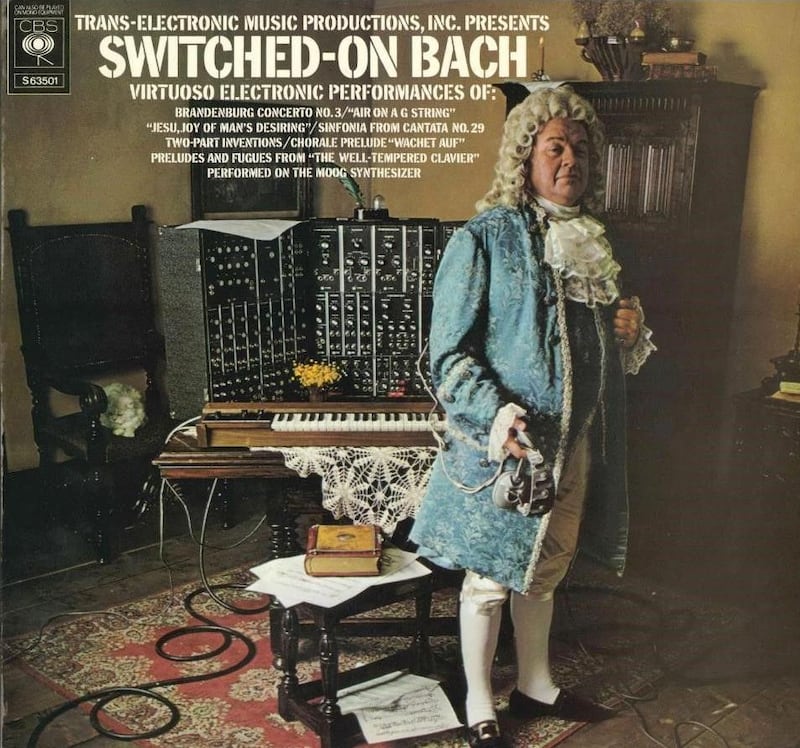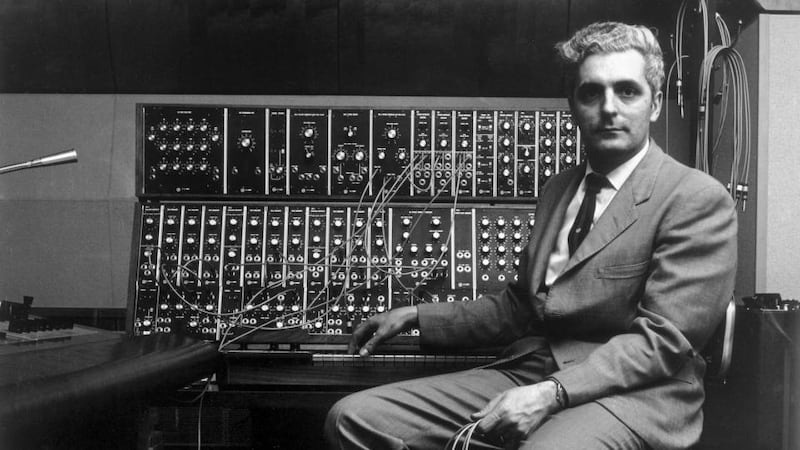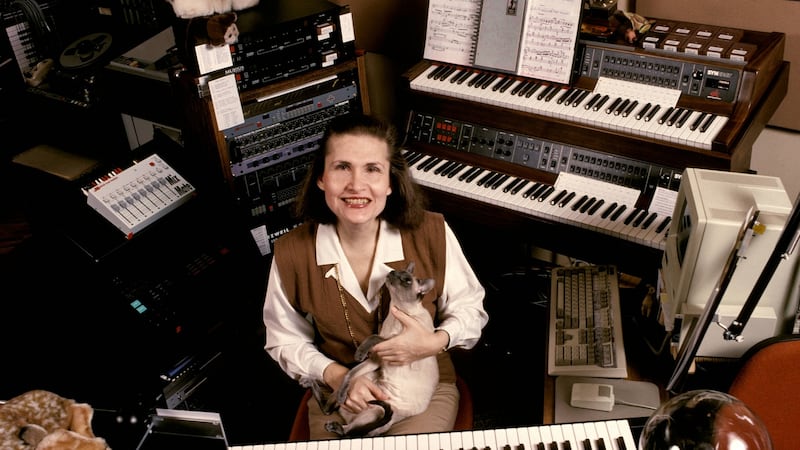Since its release 50 years ago, Switched-On Bach has been relegated to the realm of kitsch curiosity; blips and blops produced from tinkerings on primitive electronic components. Many academics and commentators believe that part of the reason the album isn't more widely celebrated is because of the gender of its creator. Wendy Carlos released her pioneering electronic album in 1968; at the time of release, she was six months into transgender hormone therapy. When the album hit the shelves, the person responsible for Switched-On Bach was still known as Walter.
Switched-On Bach was the first classical album to go platinum in America, remaining at No 1 in the classical album charts for more than three years (peaking at No 10 in the pop charts). The album won three Grammys, bringing synthesisers out of electronics laboratories and into the musical mainstream.
An electronic instrument playing the works of JS Bach wasn't music to everyone's ears. In 1964, inventor and engineer Bob Moog was manning his stall at an Acoustic Engineering Society (AES) convention in New York. Business wasn't brisk. His hand-made electronic instruments were lauded by some, but others thought them an abomination to the world of music. When he was interviewed for a television news piece on the convention, the interviewer leaned in to the camera and asked the mild-mannered inventor in very serious tones: "Tell me, Mr Moog, don't you feel guilty about what you've done?" That upset Moog, but it was indicative of how some people felt about electronics being used to create serious music.
0 of 3
Roused
Moog fell asleep after lunch and was roused from his nap by a music student from Columbia University who seemed not only interested in the musical potential of the modular synthesiser, but also in how it worked and made its endless array of sounds. Carlos had been advised to seek out Moog by her composition professor Vladamir Ussachevsky, a fan of Moog's work, and a musician who grasped the instrument's potential to explore new worlds of sound.
Carlos couldn’t afford to buy one of Moog’s hand-crafted, polished walnut-finished, incredibly expensive instruments. Walter Sear, who was responsible for selling the synths, recalled, “You could buy a nice house and a nice car for what these cost back in those days.” Instead, Moog and Carlos developed a barter system that saw Carlos recording pieces of music showcasing the capabilities of the instrument. For this work and for advice that aided the development of the synth, Moog knocked a few bob off the price.

The modular synth was about the same width as an upright piano, and 1½ times the height. The front panels were covered in dials, switches and patch cables. The instrument resembled a particularly chaotic and antique telephone exchange.
When Carlos worked up enough credit, her first synth was delivered to her apartment in the back of Moog's station wagon. Even before Switched-On Bach was released, the pair had struck up a lifelong, mutually rewarding friendship.
The impact of Switched-On Bach was seismic. In a 2013 interview, Giorgio Moroder cited the album as one of his earliest and deepest influences, and that it inspired him to start playing synthesisers. Moroder's production on Donna Summer's I Feel Love in 1977 is a seminal moment in the history of recorded music. The relentless chug, spiralling synth and pumping bass of the track was an aural seed drill, responsible for the germination of electronic dance music. Like Switched-On Bach, all the instrumental elements of I Feel Love were performed on a Moog modular synthesiser.
Samples
In 2013 Daft Punk recorded Giorgio by Moroder, their homage to Moroder that features samples from an interview they recorded with him. The influence of Wendy Carlos on Daft Punk isn't solely via Moroder. In 2010 the French duo composed the soundtrack for Tron: Legacy, a remake of the 1982 film Tron. Carlos had composed an epic score for the original film, blending choir, orchestra, organ and a host of synthesisers. Daft Punk leaned heavily on the original work for their contribution to the reboot.
Carlos's soundtrack for Tron followed successful collaborations with Stanley Kubrick on the soundtracks of A Clockwork Orange and The Shining. Part of her work on A Clockwork Orange featured a reworking of Symphonie Fantastique by Berlioz, once again breaking stereotypes associated with electronic musicians and producers.

Shortly after Switched-On Bach's release, it was played in Carnegie Hall. Following that, composers Leonard Bernstein and Leopold Stokowski held a concert in the same venue featuring the New York Philharmonic and a Moog synthesiser. Celebrated classical pianist and music writer Glenn Gould declared that "Carlos's realisation of the Fourth Brandenburg Concerto is, to put it bluntly, the finest performance of any of the Brandenburgs . . . I've ever heard."
Mick Jagger was among the small number of musicians able to afford a modular Moog synth. The Rolling Stones bought one a year after Switched-On Bach's release. Jagger can be seen playing a Moog in the 1970 film Performance. The Moog synth requires years of practice to master, and it didn't get used much by the Stones, so they sold it to German electronic music trailblazers Tangerine Dream, who featured it on many of their recordings.
The album stands as a monumental technological feat and as well as a musical milestone
Yes keyboard player Rick Wakeman picked up a cheap Moog synth secondhand. These early instruments were monophonic, meaning they could only play one note at a time. Wakeman found a disgruntled customer in England who'd bought a Moog, but thought it was broken because it wouldn't play chords. Unlike Jagger, Wakeman got his for a song.
Limitations
The limitations of the early Moog synthesiser used on Switched-On Bach are often overlooked. The original instrument was monophonic, but Bob Moog built a component especially for Carlos that triggered chords. Upon advice from Carlos, key sensitivity was introduced to the instrument but, unlike a conventional piano, there were no sustain or expression pedals. The different voices and elements had to be painstakingly tracked and layered in the studio, expression added by adjusting filter, oscillator and envelope controls with one hand while melodies were played with the other. It was a mammoth undertaking for both Carlos and producer Rachel Elkind. The album stands as a monumental technological feat and as well as a musical milestone. Carlos and Elkind had to tune the synth before each take and hope it stayed in tune for the duration of each track.

Elkind was also a pioneer, starting her work with Columbia Records at a time when there were very few women working in the industry. It was Elkind who first realised how engaging an album of entirely electronic and synthesised Bach works could sound, and it was her skill and vision as a producer that made the album a reality. Just like Moog, Elkind formed an enduring and productive friendship with Carlos, and is credited as co-composer on the soundtrack of The Shining.
Carlos underwent gender reassignment surgery four years after the release of Switched-On Bach. She publicly announced her gender reassignment in a 1979 Playboy magazine interview."I don't know what effect this is going to have," she told Playboy. Many believe the publicity surrounding her gender reassignment radically changed how her work was perceived, appreciated and discussed. When one reads about German electronic music visionary Karlheinz Stockhausen, one rarely discovers that he believed he was born on a planet orbiting the star Sirius. Stockhausen identifying as Sirian has about as much bearing on appreciating his work as Wendy Carlos's gender has on appreciating hers. In this 50th anniversary year of Switched-On Bach, what should be celebrated is the vision, creativity, skill, dedication and artistry it took to create an album that changed music forever.
Mark Graham is a lecturer in the Department of Creative and Performing Arts in Waterford Institute of Technology, and a member of the electro/rock band King Kong Company














